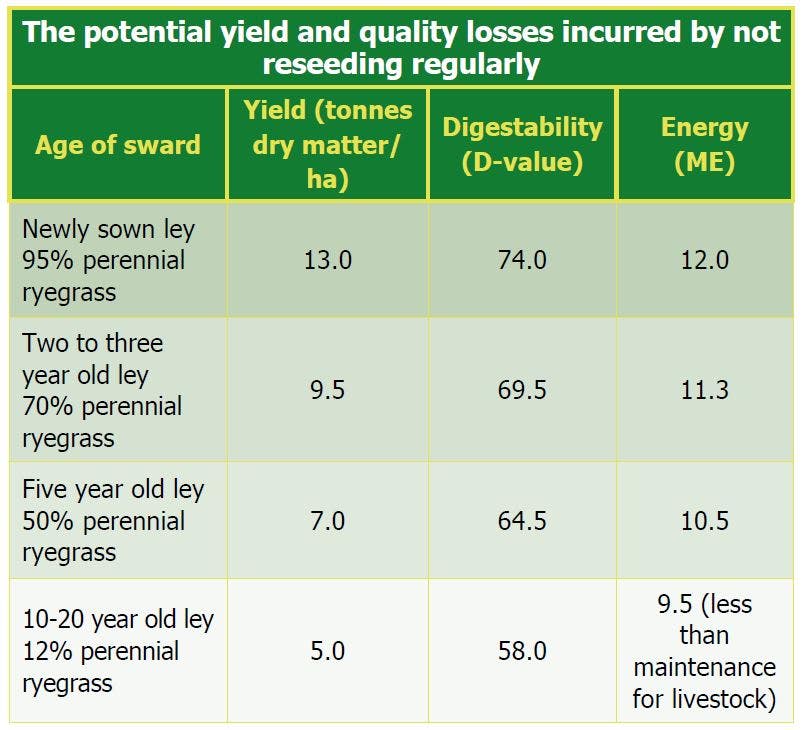
Grassland improvement to lower costs of production
Improve grassland for on-farm efficiencies
Graham Ragg, Senior Agronomist
Grassland is the most important yet often overlooked resource for livestock farmers and will directly influence a farm’s profitability. That is why correct management and regular reseeding is important to maintain yields.
Feed costs represent up to 70% of the total costs on many livestock units, so producing quality grass silage and grazing has a large impact on reducing costs.
Grassland improvement takes quite a bit of planning, time, and expense, but the rewards are undeniable.
Tell-tale signs your grassland isn’t performing:
- There are various signs that will indicate underperforming swards. These include:
- The annual accounts
- Farm bank balance
- Silage analysis
- Live weight gains of the stock
- The milk tank
- Soil tests or by measuring grazing and silage yields and benchmarking with other producers.
The first step to improving grassland management is the realisation from the farmer there is a problem on the farm. Once the farmer has recognised a problem with grassland performance exists and has realised how much it is costing, then it is important to consider what to do to correct it.
The importance of reseeding
Yield, digestibility and energy all decline markedly over the five to ten years after reseeding (see table), meaning regular reseeding is essential on livestock farms to maintain long-term profitability.
When you calculate the financial losses in terms of lost energy per hectare and the lost value in milk or meat, the figure in pound notes is truly astounding.
The increase in production gained by reseeding means investment needed for reseeding is normally paid back in the first year.
The digestibility of leys diminishes rapidly over the years as weed grass species become more prevalent in the sward with the consequential loss in energy going into the animal.
With a ten to twenty-year-old ley, with only 12% perennial ryegrass content, the D-value will be around 58 D and ME at 9.5, which is below maintenance levels for stock.
Because only 2-3% of the total grassland is reseeded every year the average age of the grassland sward in the UK is something like 30 to 40 years old.
Of course, there are some farmers who are reseeding regularly as their cropping rotations encourage it and there are some farmers who have ‘seen the light’ and plan to reseed regularly. The beauty of reseeding is when it is done well and managed correctly it can offer the solution to increasing farm profitability and sustainability.
As Basic Payments (not single farm) are phased out over the next seven years, a hole will be created in some farm finances. Now is the time to get ready for this huge challenge. It is time to react to the change in farm support and get your business in order for the financial challenges ahead.













